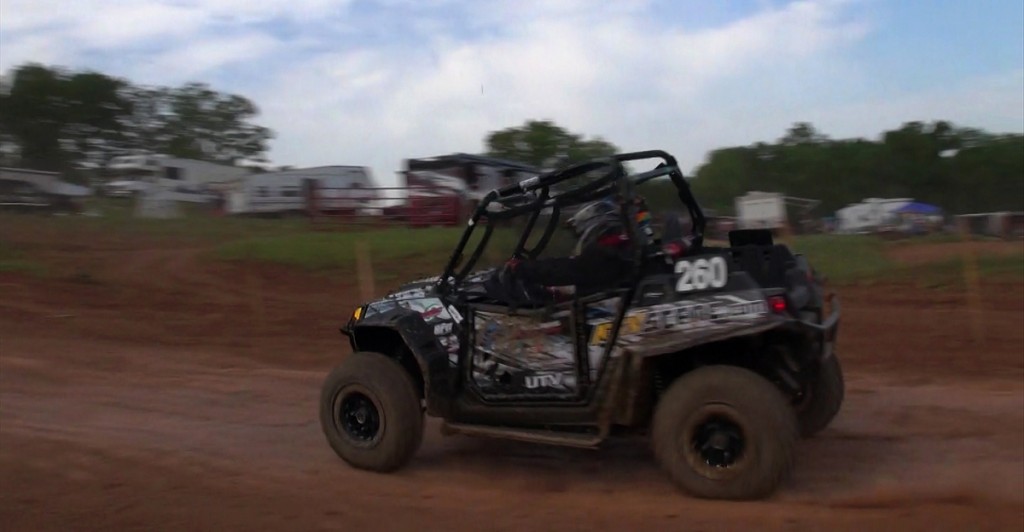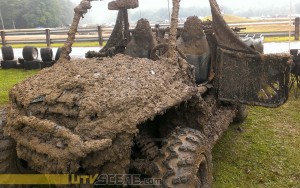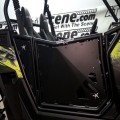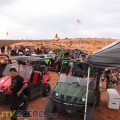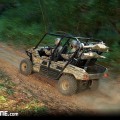Project GNCC Championship
- Updated: February 28, 2014
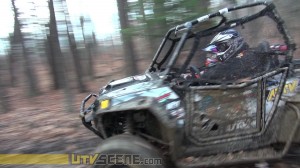 As I said earlier, my starts were horrible until I got the hang of it. My problem was not hearing the engine fire before mashing on the gas. Overtime I got the timing down. You should do what I didn’t and practice your starts with headphones blasting in your ears so you cannot hear the engine fire. You’ll definitely want to pre warm the machine and get the belt and fuel pump acclimated to the mayhem you’ll be putting the machine through a few minutes prior to the start. Also, the XP starts in gear, which helps tremendously.
As I said earlier, my starts were horrible until I got the hang of it. My problem was not hearing the engine fire before mashing on the gas. Overtime I got the timing down. You should do what I didn’t and practice your starts with headphones blasting in your ears so you cannot hear the engine fire. You’ll definitely want to pre warm the machine and get the belt and fuel pump acclimated to the mayhem you’ll be putting the machine through a few minutes prior to the start. Also, the XP starts in gear, which helps tremendously.
Before I get into the improvements that were made to go GNCC racing, and there really weren’t too many needed, I want to talk more on how impressed I was with the 900’s stability and superb handling, especially compared to the new XP 1000. I know many of you are tempted to go the 1k route. I can confidently say that no other machine is as capable to run at the front of the GNCC Stock Novice class, including the new XP1k (which is indeed eligible for that class) as the 900 is. The 900 doesn’t push in the corners, like the 1000 tends to, it’s lightweight, nimble, not as long, shorter, has a good lower-center-of-gravity-feel and best of all – it’s much more affordable.
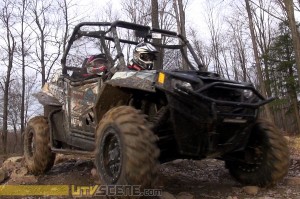 I need to continue a little more with one of my favorite things about the XP 900, and that’s its stability, Some GNCC UTV racers switch from 2 to 4 wheel drive throughout the race. I experimented with this and found it’s best to leave it in four wheel drive from start to finish. When you get the front wheels pulling you add torque to the front of the XP and this tends to help the front of the machine to squat down a bit more, thus improving its ability to carve through corners and confidently plant itself wherever you aim it. Also, not only is it one of my favorite GNCC rules, which no other series implements, but the added mandatory copilot really helps to balance the machine and keep it planted on all fours.
I need to continue a little more with one of my favorite things about the XP 900, and that’s its stability, Some GNCC UTV racers switch from 2 to 4 wheel drive throughout the race. I experimented with this and found it’s best to leave it in four wheel drive from start to finish. When you get the front wheels pulling you add torque to the front of the XP and this tends to help the front of the machine to squat down a bit more, thus improving its ability to carve through corners and confidently plant itself wherever you aim it. Also, not only is it one of my favorite GNCC rules, which no other series implements, but the added mandatory copilot really helps to balance the machine and keep it planted on all fours.
On to more reasons why I feel you really need to up the ante and purchase an LE model. You guessed it, it comes with EPS (Electronic Power Steering). This was such a nice addition. I can’t imagine racing without it, especially at low speeds through tight sections. You can really dart back and forth fast and effortless. Some GNCC guys are adding steering quickeners to double the steering. I didn’t do this and got along pretty well, but if you can tackle this mod I will admit it will give you an advantage as you can get those front wheels turned and pointed in the correct direction twice as fast. They retail for just over $100 bucks but you’ll need to fabricate a mount and spend some time customizing it to work. As much as I like the EPS system I do have to say it’s one of very few things on the 900 that I have a slight problem with. A two-speed EPS system would have really been nice as it would give more front end feedback at high speeds, where you don’t need effortless steering. All in all this is a minor gripe however, if I only had once choice to improve the steering it would be an aftermarket 2:1 quickener.
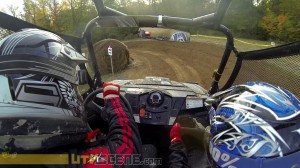 The rider and passenger area are pretty spot on for GNCC racing. I know I’ve praised the 900 a lot, but I’ll nit-pick a little here. I suppose you could buy better seats but I and all the copilots I raced with never complained. You will need to purchase a four or five-point harnesses and I would highly recommend the ones I got from Blingstar. They are padded with memory foam and very well made. If you’re a taller rider you might notice the lack of left leg room especially on long races, but it’s not so bad, I sure wouldn’t want to sacrifice any of the 900’s superb handling for a few inches of room for my left foot that’s for sure. I’m thankful for the tilt wheel system, and well placed lights and 4WD switches. The plastic steering wheel on the 900 feels a little cheap but I never had an issue and don’t really see a need to spend money on a replacement, especially for entry-level stock UTV racing. Gauges are good except a bigger gas gauge would have been nice. It’s very hard to see how much gas you have at a glance. I found this out while racing a few four-hour UTV Rally Raid events at the end of the year. The instrument panel has held up quite well though despite lots of mud and spray washes. Also the floor has several drain holes to allow water to escape.
The rider and passenger area are pretty spot on for GNCC racing. I know I’ve praised the 900 a lot, but I’ll nit-pick a little here. I suppose you could buy better seats but I and all the copilots I raced with never complained. You will need to purchase a four or five-point harnesses and I would highly recommend the ones I got from Blingstar. They are padded with memory foam and very well made. If you’re a taller rider you might notice the lack of left leg room especially on long races, but it’s not so bad, I sure wouldn’t want to sacrifice any of the 900’s superb handling for a few inches of room for my left foot that’s for sure. I’m thankful for the tilt wheel system, and well placed lights and 4WD switches. The plastic steering wheel on the 900 feels a little cheap but I never had an issue and don’t really see a need to spend money on a replacement, especially for entry-level stock UTV racing. Gauges are good except a bigger gas gauge would have been nice. It’s very hard to see how much gas you have at a glance. I found this out while racing a few four-hour UTV Rally Raid events at the end of the year. The instrument panel has held up quite well though despite lots of mud and spray washes. Also the floor has several drain holes to allow water to escape.
At year’s end I’m happy to report that my Polaris RZR XP 900 LE was way more reliable and rugged than I thought it would be. With all the above racing I only needed to replace the the front wheel bearing a bent tie rod, two axles and a set of ball joints.
With a season’s worth of racing behind me I’ve observed and learned a lot. I think it’s paramount that you take extra care when racing through the woods, especially if you’re new to the sport. I saw several machines on the side of the track and many were during the first lap. Worse than breaking a tie-rod is the fact that it only takes one nip of a tree to bend the frame on the XP. I have two helpful ways to combat this and I suggest you do both if you’re going to race a bunch of GNCCs. One is to slow down, concentrate and get through the tight stuff without bouncing off trees and rocks, the second is to reinforce and gusset the frame. As good as the Polaris is, it also has a few weak points, surviving the rigors of GNCCs and tree-impact is essential in winning races and a championship. I’ll cover this more later, but I’ve seen some very disappointed people that spent a lot of time and money only to be sidelined within five minutes of the race, so if you’re serious about getting an XP 900 read further to learn about some good preventable maintenance and improvements needed to compete in the extremely rough GNCC series.
